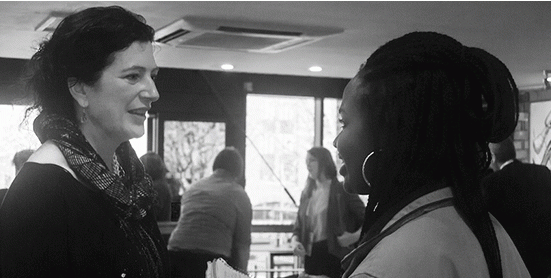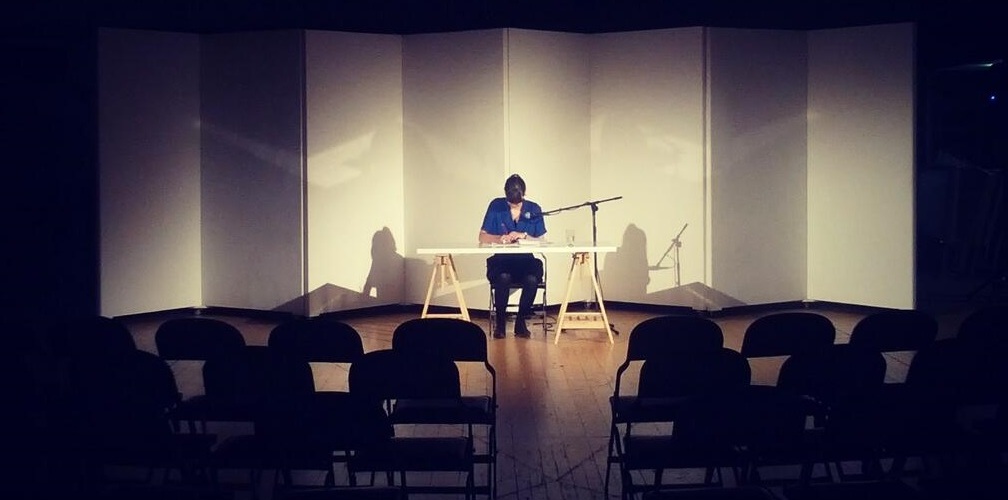
“The cultural map is being re-drawn… by new behaviours, new technologies, new models of funding and new local, national and global thinking. On 25 and 26 February 2014, No Boundaries considers the role of culture in 21st century society, bringing together leaders and activists and connecting discussions across two venues and the web.”
For the last two days I’ve been working with Watershed as one of their young journalists for No Boundaries, an open symposium on the role of culture and the arts in 21st century society. I can’t wait to share all the incredible things that I’ve been able to be a part of!
Day One
11:47:
Busy, busy, busy, buzzing.
Once I had reached the very top of the stairs it had been reestablished that today wasn’t a regular day at the creative hub that is Watershed. However it was only until I had seen people in full professional attire looking important with their rather large lanyards was I made aware of how immense these two days will be. From working with people in various ways I’m naturally aware of the importance of being open-minded to whatever the day has to offer – THE FIRST TRANSITION TO YORK AND BACK IS SUCCESSFUL, HOOOORAAAY – and with that, here goes Session 1: New Potential.
12:12:
It’s common for people to initially relate ‘diversity’ to ethnicity but Nii Sackey evolves this into the importance of creative diversity with the mindset that there’s a collapse of it. He talks about how as an arts community we gravitate to what we know because of this idea of the uncomfortable yet what’s key to success is dialogue with different people and addressing the uncomfortable. Diversity means we have to find creative ways to make things possible and reinforces that our focus should be on using what we’ve got and engage with people from that and funds will gravitate to you.
12:28:
From Nii Sackey setting the scene on his talk about the importance of a shifting focus onto diversity to then being appropriately followed up by Brian Gambles’s discussion on the immense model that is the Birmingham library and how this kind of initial diverse development should be an inspiration to further projects – whoever planned the schedule should be patting their back. With 1.5million visitors in less than six months, it seems the Library of Birmingham’s initial aim to create a visitor attraction, an ‘event space with a difference’ that ‘hands over power to the users of the library’, was a success. By ‘inviting young people to say what they want from their library’ they’ve enabled long-term partnerships and encourage the involvement of many in order to develop the community in their city. I’m also personally inspired by Gamble’s anecdote of how even the construction of it had such substantial social impact it gave someone not only employment, but a home – I am hooked, lined and sinking. To me this reinstalls how as an arts community, although trying to expand from our social position, we should never fail to remember the more minor aspects of our influence.
P.s. Brian Gambles’s sassy relationship with the PowerPoint is endearing, if you missed that I feel for you.
12:44:
Sophie Setter Jerrome rightly addresses the substantial importance of technology in our society to the point it’s now an extension of who we are. And why is this? ‘In the real world people dislike it when you monologue for ten minutes without pause’, thus a platform to ‘talk about what you’re passionate about with very few restraints’ to a ‘community of like-minded people’ has now become part of our everyday fundamentals. This doesn’t then take away from the internet being a fun hobby or a helpful tool. She discusses how it’s about utilizing the feedback you get as it’s just as important as the content itself. In this digital day and age it’s about bringing about a platform and ‘visibility to often silence groups’. Although, she states ‘we don’t see the power of online communities’, I feel, as a young person, that I do acknowledge this power, which makes me wonder: is it the older generation in our communities who currently hold the position of influence that don’t? At what point will they realize if they make their potential customers ‘so spoilt for choice they won’t have a loyalty to your brand’?
12:53:
Sorry, let’s first address how badass Lynsey Merrick’s introduction, “her weapon of choice is culture” is: Badass. Right, onwards and upwards.
Merrick discusses this idea of a Creative Revolution and how this comes from ‘understanding where we’re coming from to understand where we’re going’. Instead of inappropriately forcing ourselves into the mainstream (defined today as ‘the current common thought of the majority’) I agree with her sentimentality that we need to create substantial opportunities to enable a lifelong journey in Creativity and Culture with people from a young age, with emphasis on a ‘lifelong journey’. ‘History tells us society will respond to need’ and it’s up to us to establish a need for the arts within our communities. As soon as we address the need to branch out we also need to maintain the creative diversity that Nii Sackey discussed in order to deepen and strengthen relationships to become present at the local grassroots level – it’s our social responsibility as an arts community.
‘Every child has the right to rest and leisure, to engage in play and recreational activities appropriate to the age of the child and to participate freely in cultural life’.
13:06:
What struck me the most is how simply Jude Kerry put everything I’ve always been thinking but unable to articulate: the patriarchal hierarchy in culture with children at the bottom. This notion of ‘social provisions for children is at our beckon call’, where we give children specific moments, for instance school holidays, as their opportunities to explore creatively. Kerry underlines our utmost importance should be offering a form of formal education to implement into academia. Now to me that should involve taking students out from this classroom feel to developing an opinion of the arts being just as significant as anything math’s or English has to offer. This shouldn’t mean a learning curve for people with an interests in the arts to thrive and those who are more logical in their learning style to be pushed aside, as after all we’d only be creating a backward system of what we currently have, but offering a platform where even those who find creatively interacting with learning a challenge are also encouraged to develop their potential further by regarding the uncomfortable.

Interviewing delegates. Photo: Lauren Phillips
My first post-session conversation with Shawn Sobers, a Senior Lecturer of Photography & Media, Dr. Edson Burton and a speaker in the first session, Jude Kelly, was extremely refreshing and insightful. Our discussion was inclusive, diverging from a range of ideologies that took us onto different topics, thus following the “No Boundaries” theme of the day. As a whole the feedback was positive with a particular appreciation for the different approaches taken towards the topic of creativity. However, Burton brought up a critical point about the absence of addressing the notion of taste, where the ‘need to feel like you have to agree with common tastes and like-mindedness’ is engraved into society. With this in mind we further discussed the complex generational change of how the loss of cultural heritage and identities over time through evolving generations has resulted in society and younger generations becoming defocused and disinterested in what were cultural stimulations that sparked creativity. From this Kelly put forward the necessity that ‘if it’s a taboo in the cultural sector we should get straight into it’ and be conscious that ‘history is ran by people who have the power’. But to that I say, instead of focusing on shifting this ideology, why don’t we, the arts community, strive to be a weapon of influence? A positive force to be reckoned with in society, from diverse partnerships between organizations to academic influence, is what we need to become.

Interviewing Susanna Eastburn, the Chief Executive of Sound and Music. Photo: Lauren Phillips
I continued my search for reflection across the room before Session 2: Adaptive Resilience. The Chief Executive of Sound and Music, Susanna Eastburn discusses the ‘really important tone for the first session’ that Nii Sackey sets in his opening speech by being ‘honest and not afraid of addressing critical issues’. From being involved in the arts already she finds the No Boundaries conference to be a great occasion to develop, reconnect and create new relations to continue to be innovative in her practice as well as a particular interest in hearing from the ‘voices outside of the arts’ because of this natural concept of being ‘open in her communications’. Also, from a technology stance it was intriguing to see the initial attraction where people were ‘curious about the interconnection of technology’ and the ‘multi-connection of two different art spaces’. I’ve found this innovative way of experimenting and exploring technology further just in the format of the overall conference to be a wonderful ironic campaign of how much there is to offer and from our shear excitement of it how little we’re utilizing it. Ali Robertson, the Director of the Tobacco Factory, mentioned how beneficial the first session had been for him yet also put forward this extremely valid point of wondering and considering how much of it will actually be implemented into our art practices and organizations.
Truth be told, I’m not sure either but the fact we’ve begun dialogue like this with this flare of open-mindedness is essential stepping-stones to getting to where we ought to be.








